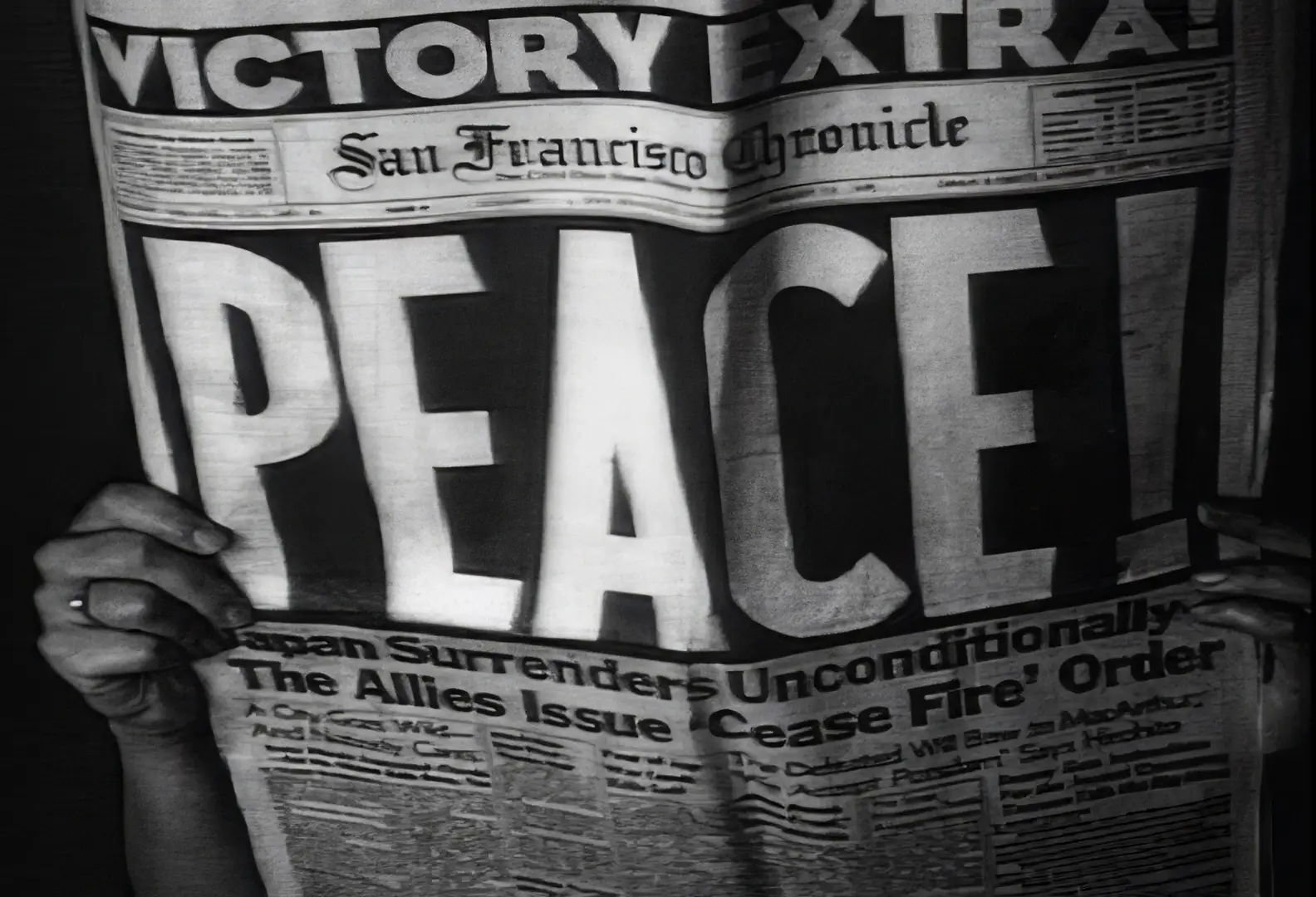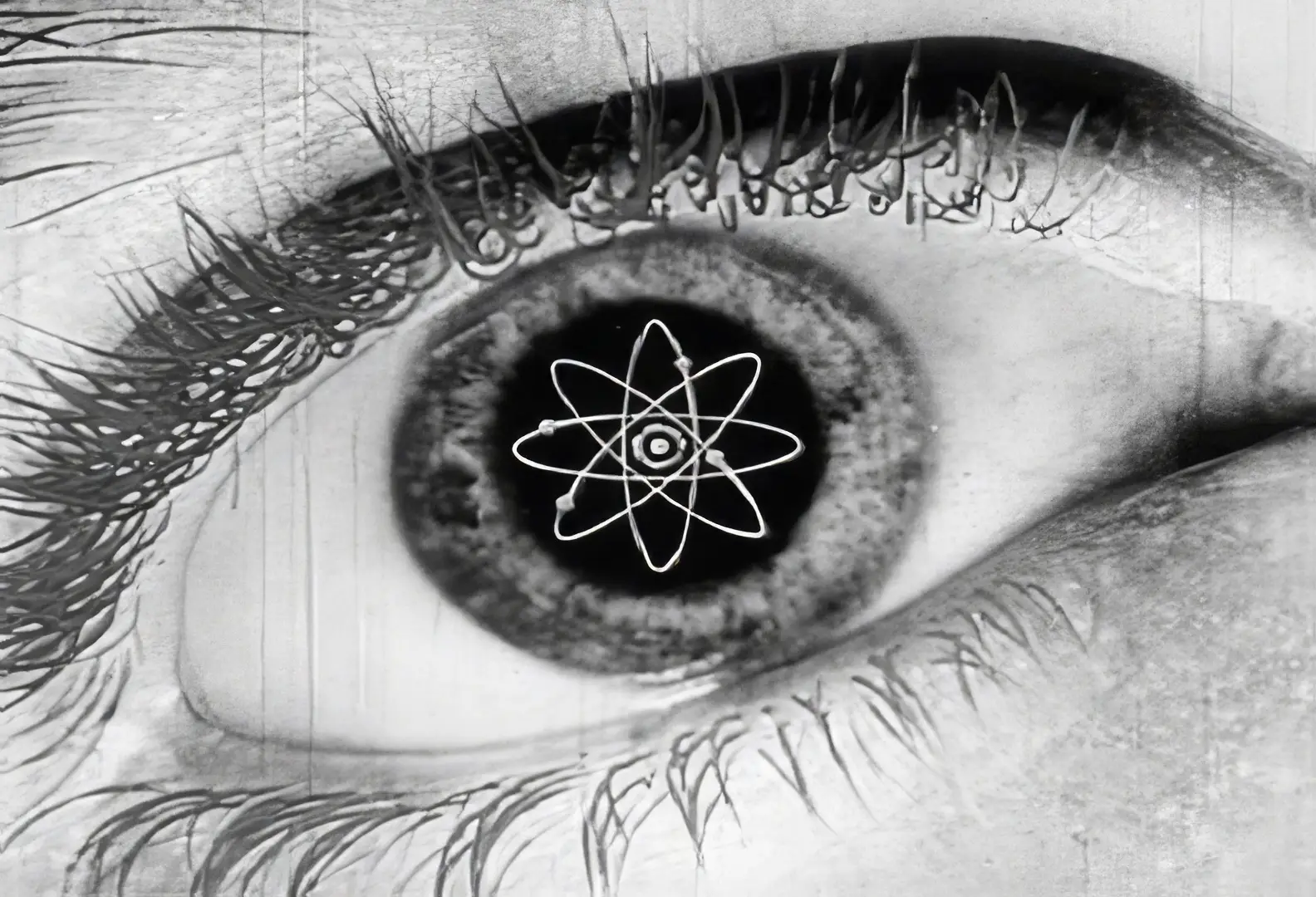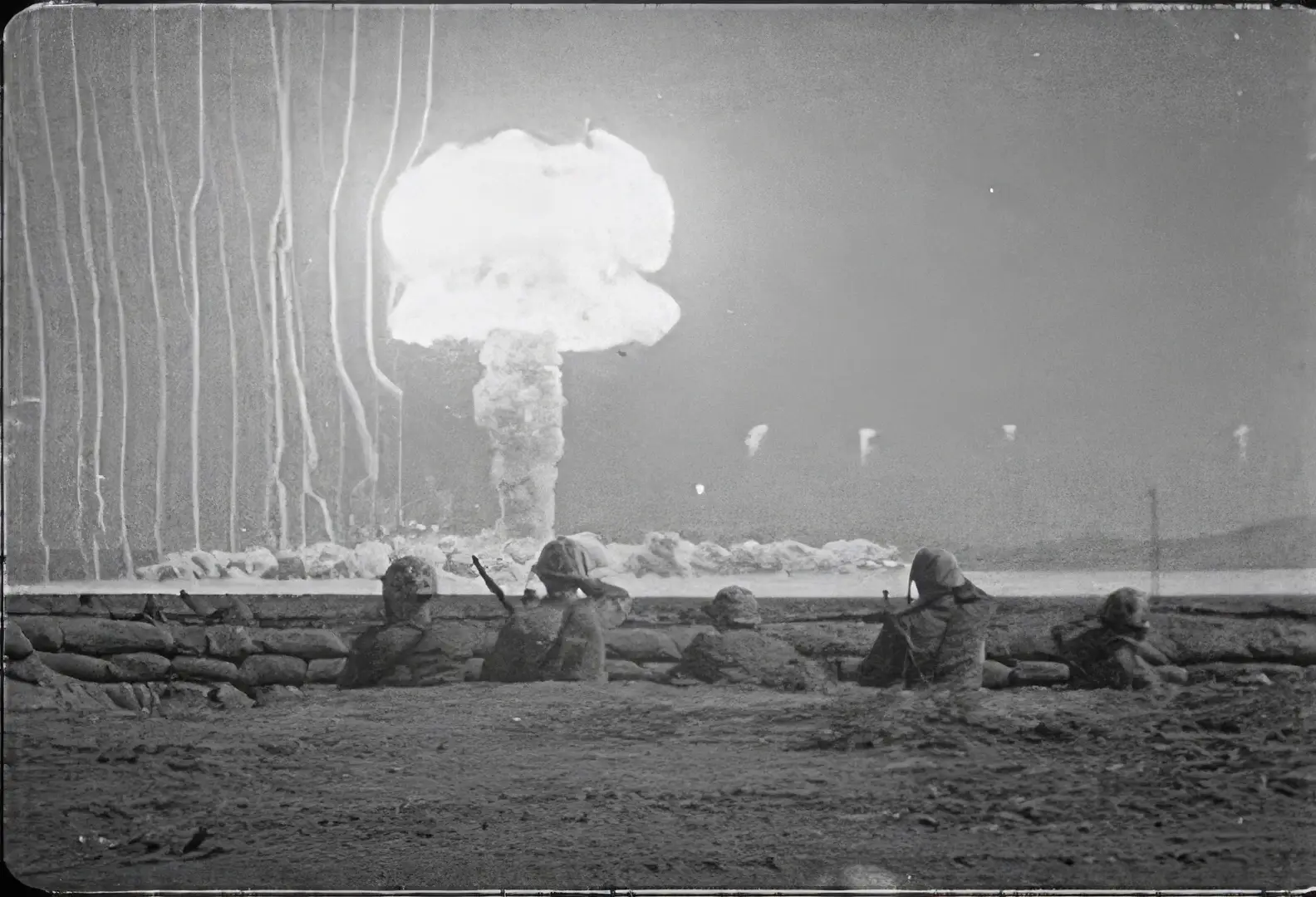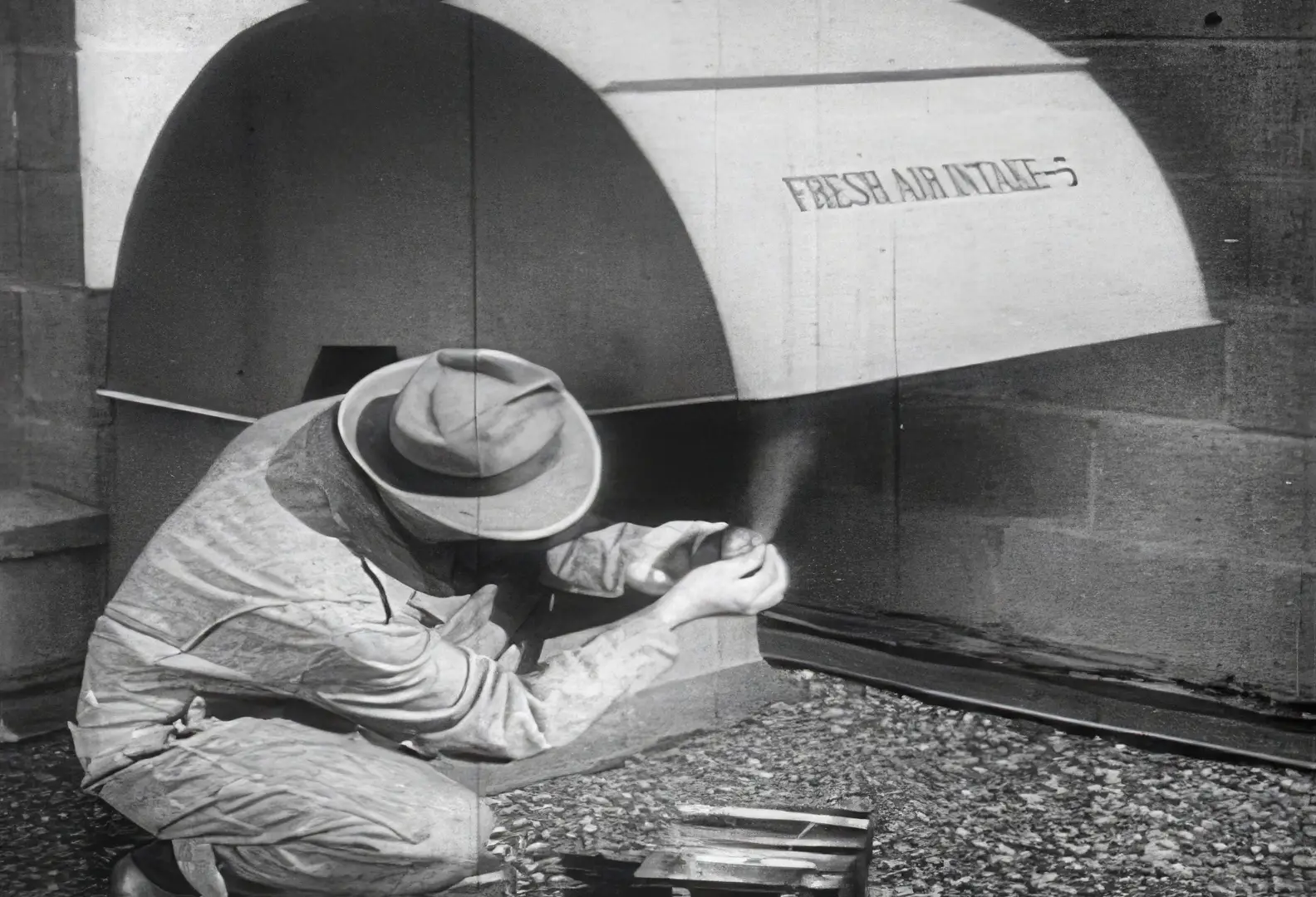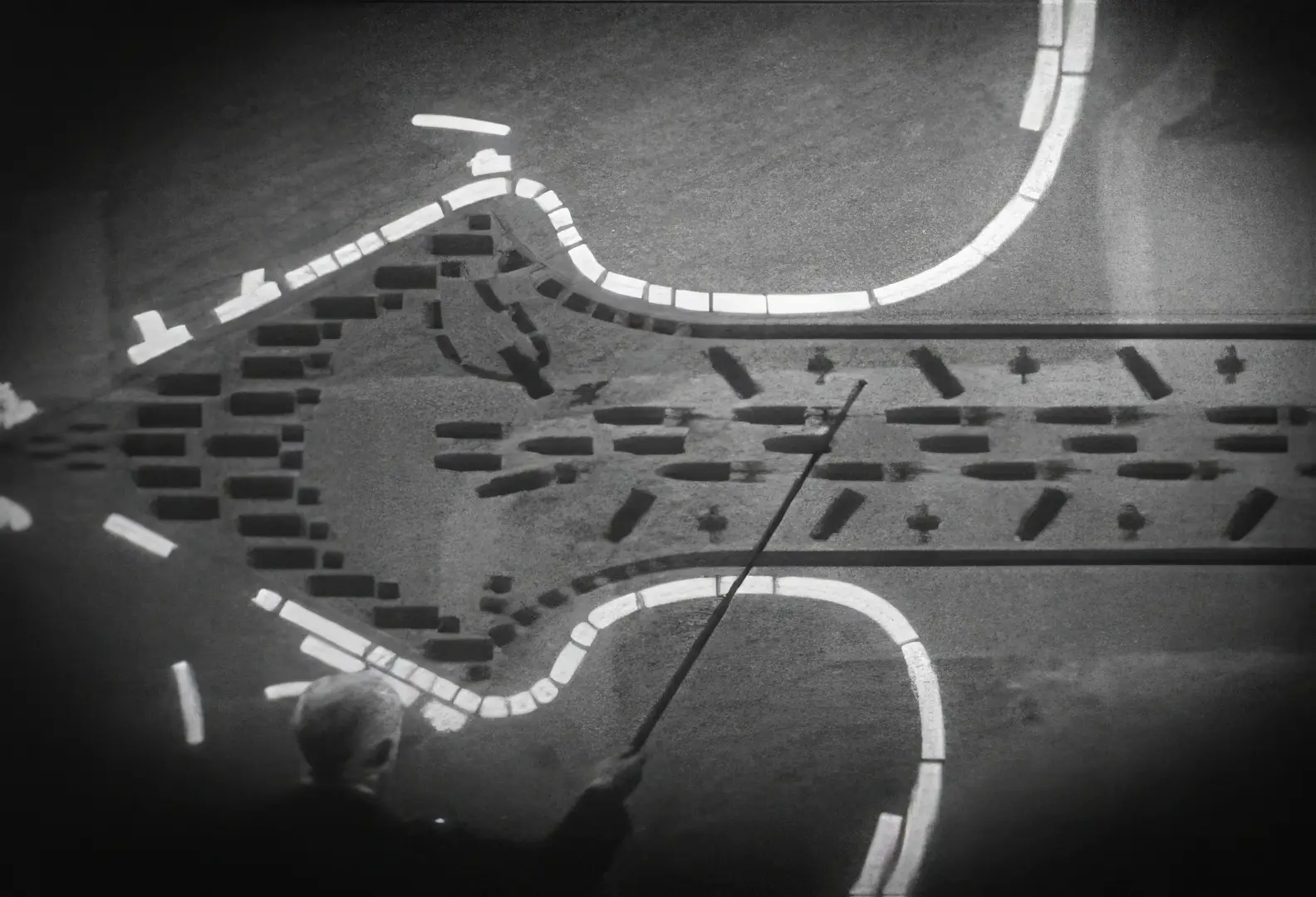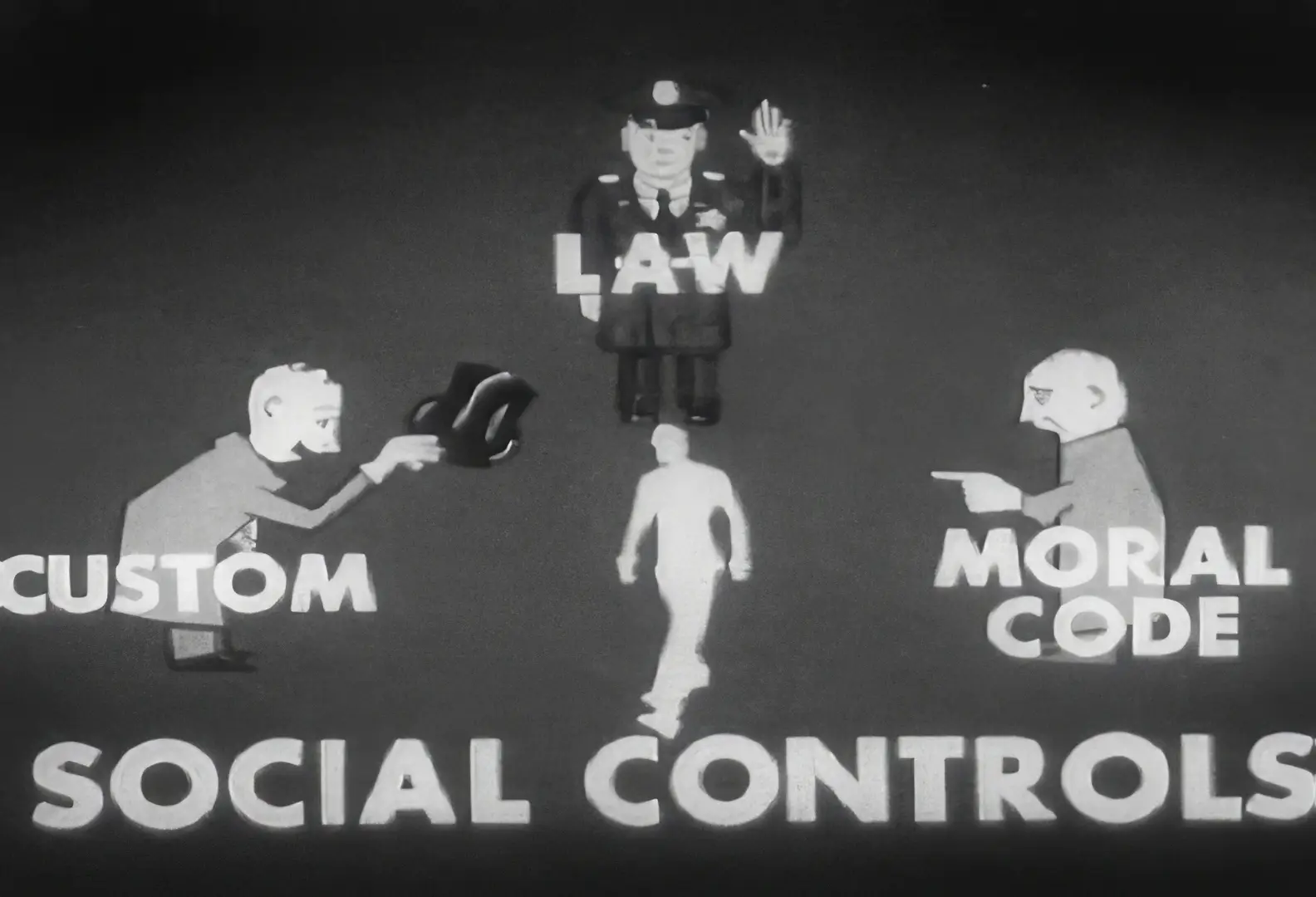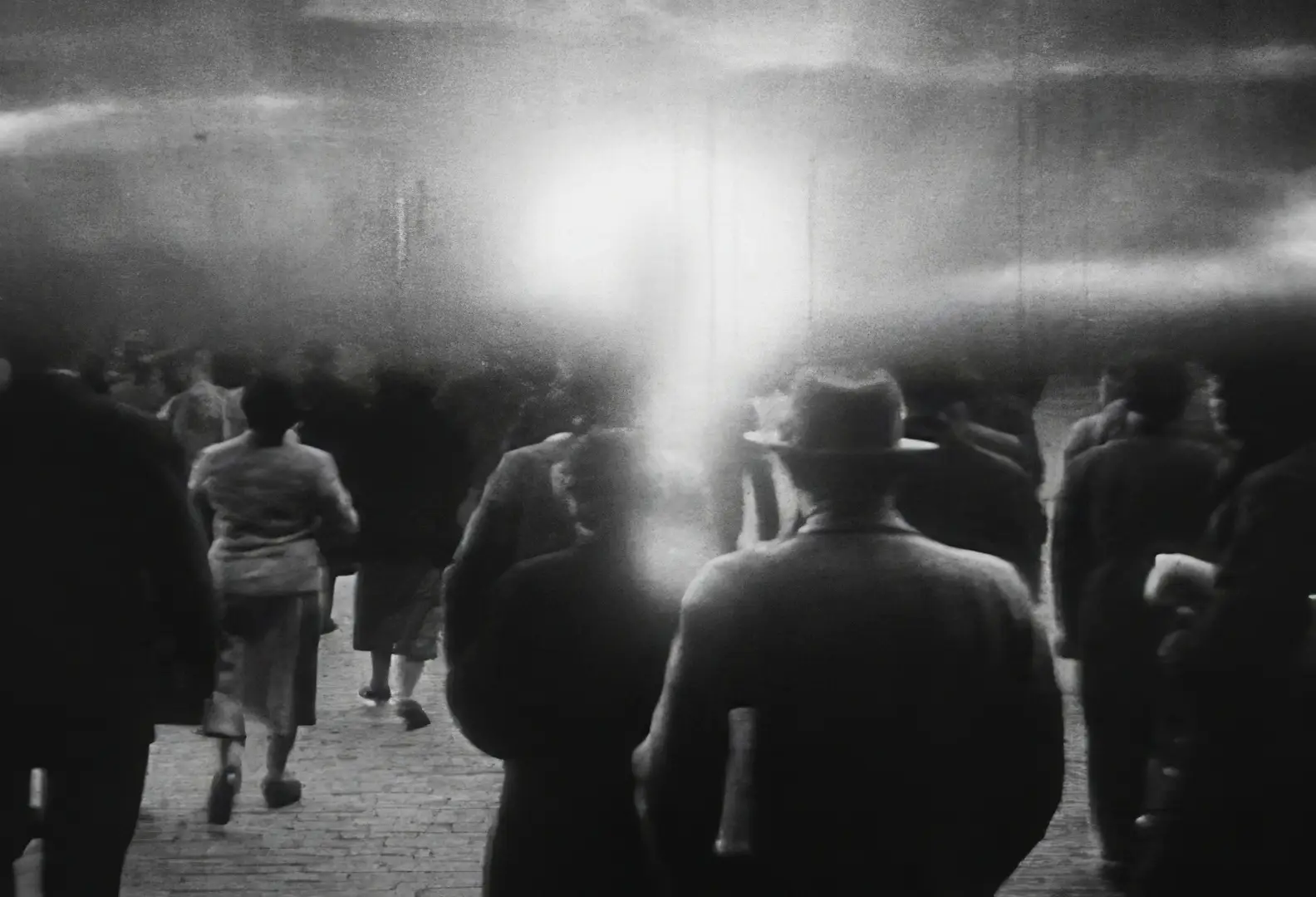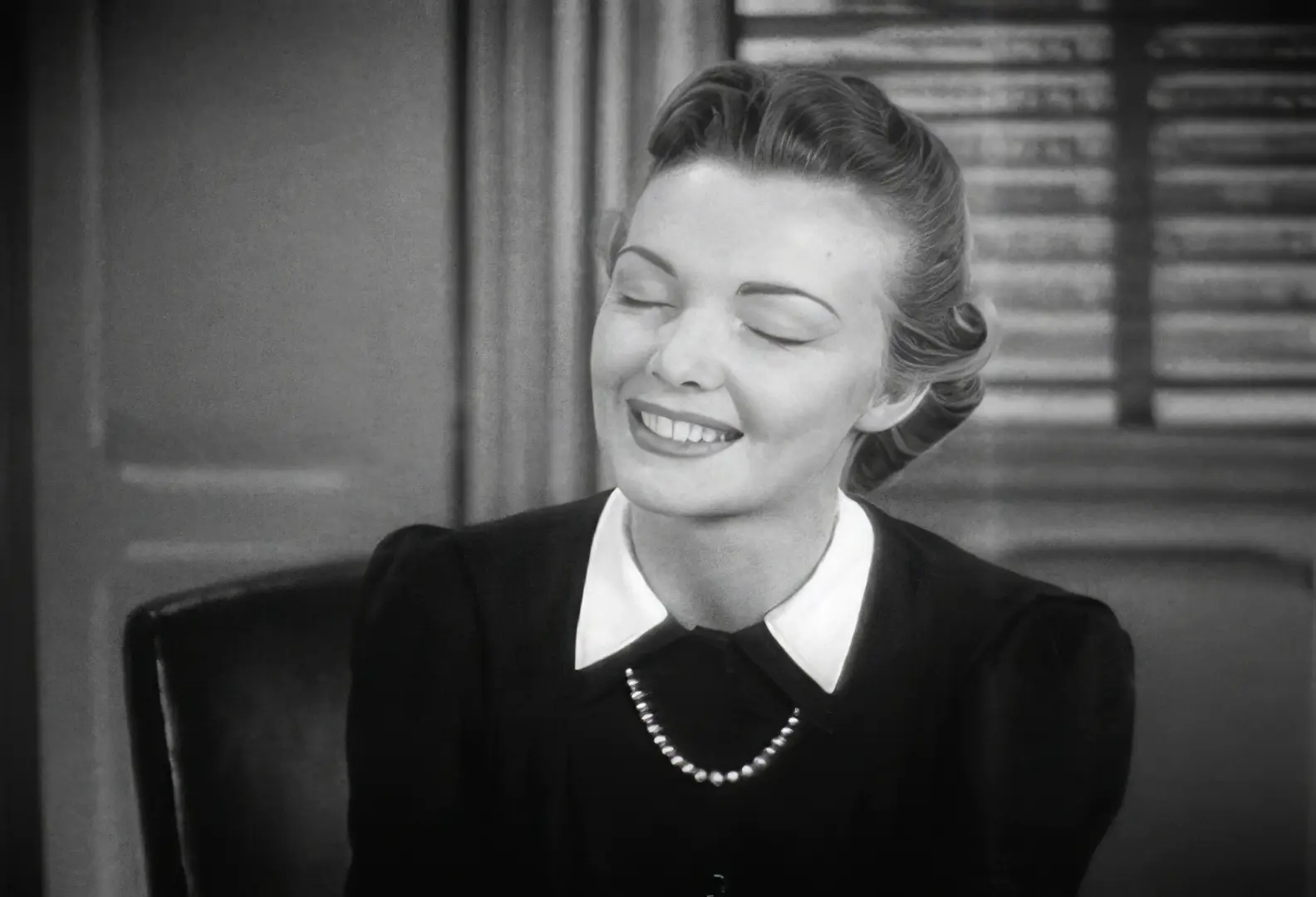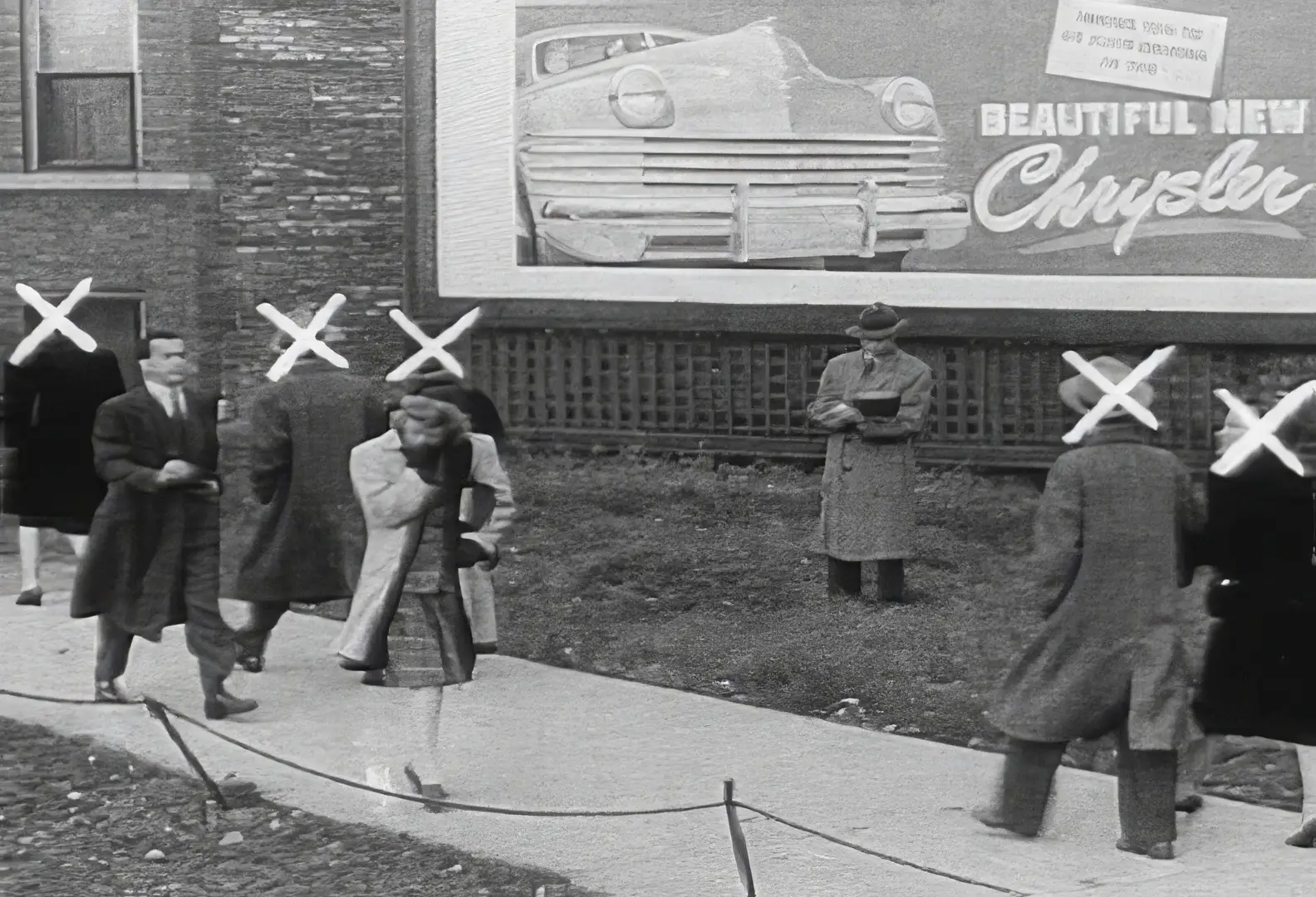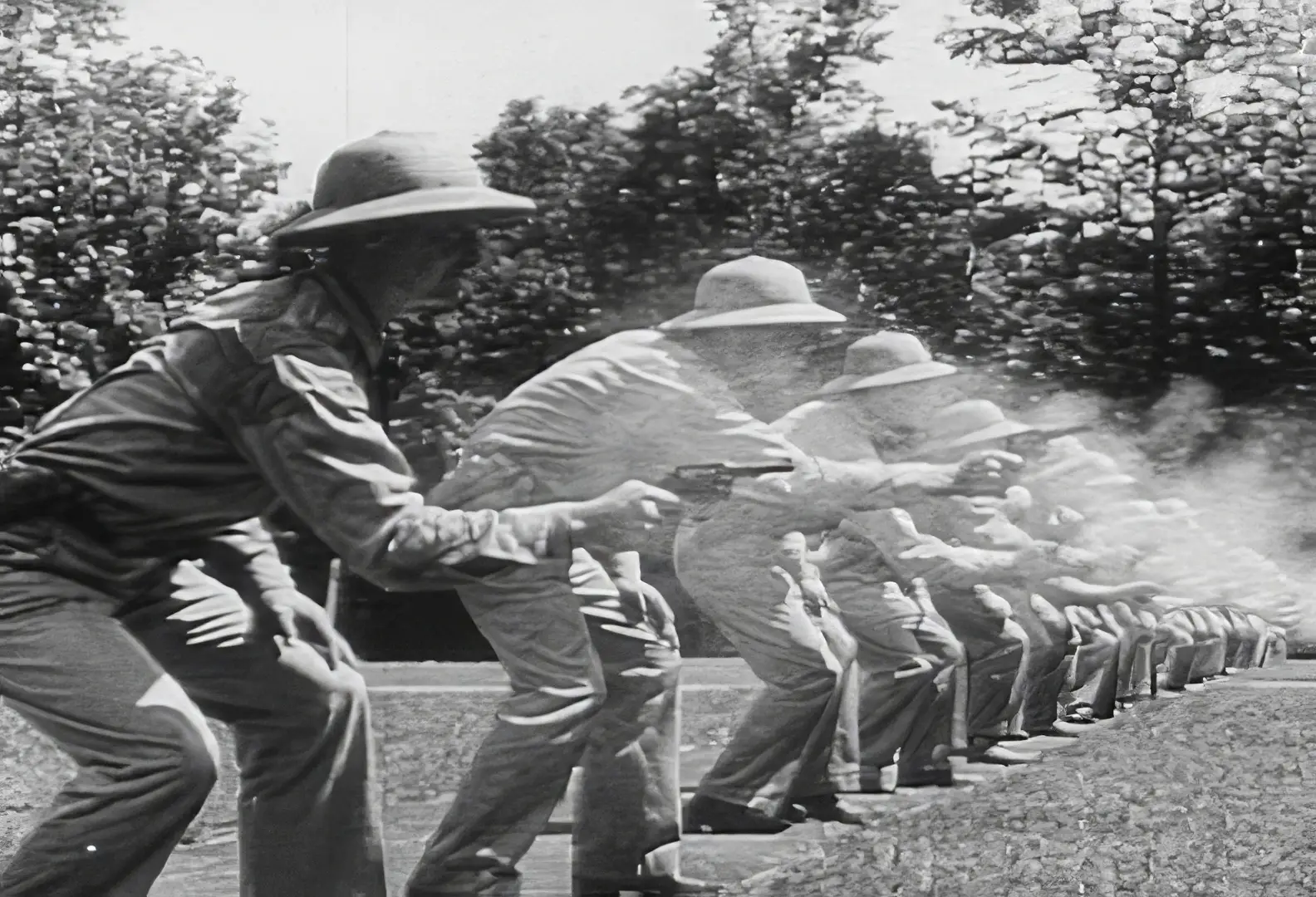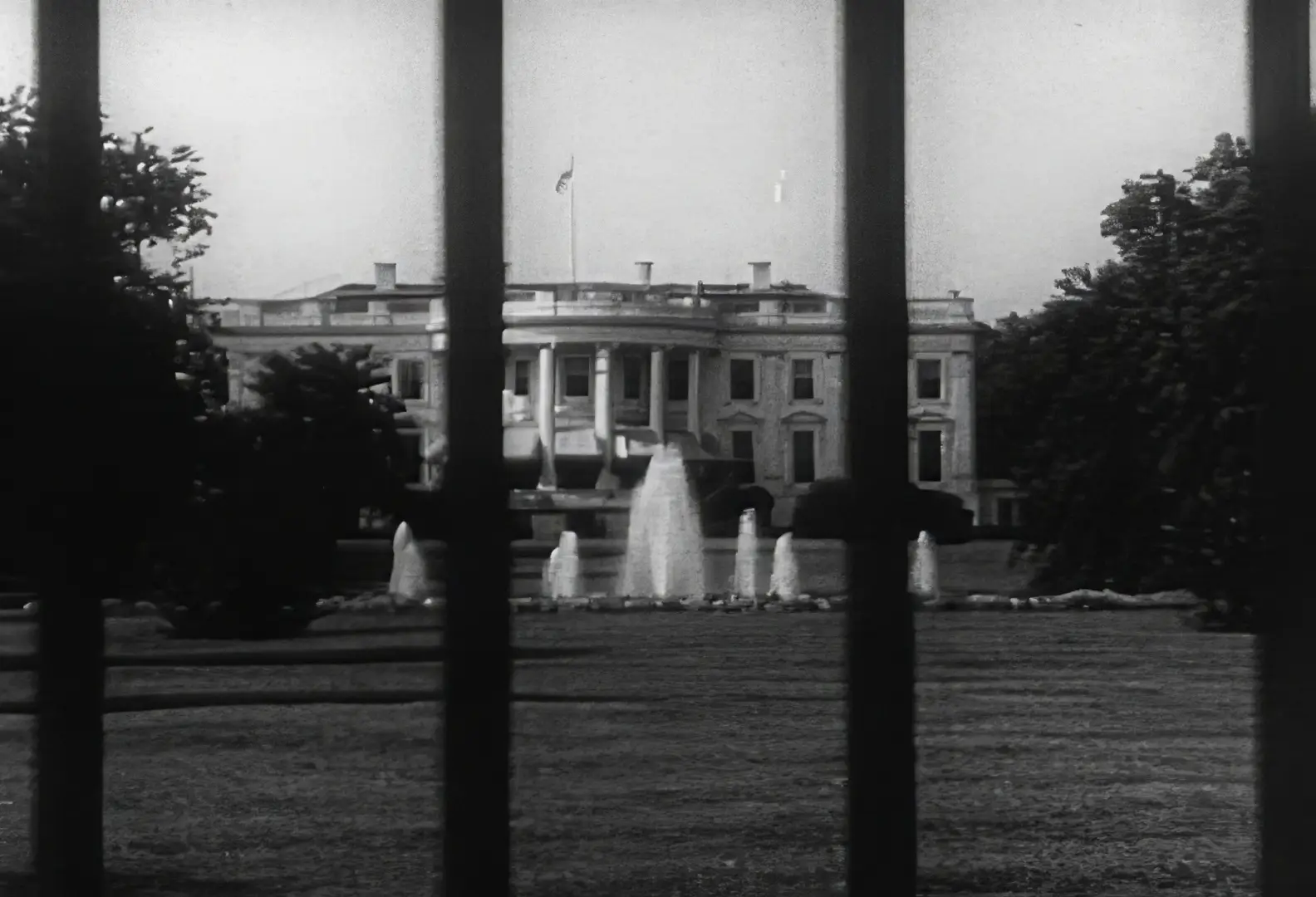2004 . 9 minutes 11 seconds . Archival footage
From our disaster proof Eastern cities, through vast, impenetrable grain fields, to the fortress shores of our Pacific coast – the USA is finally safe.
The footage and music was supplied by the Internet Moving Images Archive (at archive.org) in association with Prelinger Archives. These images were gathered from scores of industrial, military and educational films.
“Safety” is expertly constructed…in the way the archived footage reinforces the philosophical questions raised, and in the way that the film raises profound questions without providing pat answers.
Film Threat
CAST
Kevin Silva – Narrator
CREW
David Baeumler – Writer, Director, Editor, Sound Design
SELECT SCREENINGS (2005 unless noted)
Beyond/In Western NY, Albright Knox Art Gallery – Buffalo, NY
11th Biennial of Moving Images – Geneva, Switzerland
Cucalorus Film Festival – Wilmington, NC
Woods Hole Film Festival – Woods Hole, Massachusetts
Rhode Island Film Festival – Providence, Rhode Island
Filmstock 6 International Film Festival – Luton, UK
VisionFest – New York, NY
New England Film & Video Festival – Boston, MA
Balagan Film Series – Boston, MA
Echo Park Film Center – Los Angeles, CA (2006)
REVIEWS
Short Films Matter – July 30, 2024
In David Baeumler’s audacious short film ‘Safety’, we are catapulted into a post-WWII America, bathed in the illusion of newfound peace and liberty. Kevin Silva, our narrator and chameleon announcer, dons the voice of an all-American broadcaster, heralding an era of tranquility that feels like an archival dream. Baeumler’s use of genuine black-and-white footage stitches together the fabric of a nation at the precipice of hope, only to unravel it before our eyes.
The first half of ‘Safety’ is a nostalgic montage, a symphony of visual optimism that could fool even the most cynical viewer into believing in the myth of American invulnerability. The craftsmanship in post-production is nothing short of genius; every splice of pre-war and post-war imagery is meticulously orchestrated to resonate with authenticity. It’s a vintage love letter, whispering promises of safety.
But then, like a magician revealing his trick, Silva’s narration twists. The illusion shatters. The tone darkens, and the narrative pivots to expose a chilling underbelly of deceit. The American dream is painted as a fragile facade, its citizens more susceptible to threats than ever before. Baeumler doesn’t just shift the mood; he flips it on its head, dragging the viewer from comfort to confrontation.
‘Safety’ a meticulously crafted critique. It echoes with a near-dystopian quality, blurring the lines between a genuine public service broadcast and a cautionary tale born from hindsight. This experimental piece transcends typical cinematic boundaries, transforming archival footage into a haunting commentary on vulnerability and the peril of blind trust.
Baeumler’s ‘Safety’ is a riveting watch, a darkly educational experience that lands heavily. It’s a credit to the Beaumler’s post-production and narrative ingenuity, a reminder that history, however triumphant it may seem, is always more complex – and precarious – than it appears.
Film Threat – March 25, 2005 – David Finkelstein
This film, lasting precisely 9 minutes and 11 seconds, is a meditation on the spiritual and philosophical implications of the Cold War and its devolution into the current so-called War on Terror. The film is made entirely from found footage, mostly black and white footage from US government propaganda films, with a chilling and profound text heard in Kevin Silva’s voice-over. Silva has an uncanny ability to exactly mimic the tone of the typical educational or propaganda film’s narrator, while adding a menacing tone which speaks volumes through implication. The text itself seems closely based, at times, on what must have been the original texts for some of these films, with only tiny tweaks which give it an entirely new meaning. (Instead of saying that our American freedom is based on the “idea” that each individual’s life is important, Silva says that it is based on the “lie” the each individual’s life is important.) The soundtrack is completed with typical patriotic music, blended expertly with air-raid sirens and other menacing sound effects.
The film begins with a montage from a film, from the period immediately following WW II, in which the narrator boasts that the era of terror is over, and our complete control over our own safety has brought us to an “apex of freedom.” The post 9/11 irony is extremely heavy, as we see footage of happy Americans who “can go wherever we want, without fear of reprisal.”
The film takes us into darker and darker territory. It is revealed that all of this blather about safety is just a “coded message,” and that we are now more vulnerable to attack than ever before. Our post-Cold War position as the sole superpower makes this inevitable: “No matter how beneficent our aims, our very invincibility IS terror.” It remains to be seen, as we face an erosion of centralized authority, if it is really true that human nature is innately destructive, and that our new “freedom” from patriarchal control will unleash a destructive chaos.
“Safety” is expertly constructed, both in the subtle way in which the initially “reliable” narrator gradually transforms into a menacing philosopher whose questions we would rather not hear, in the way the archived footage reinforces the philosophical questions raised, and in the way that the film raises profound questions without providing pat answers.


